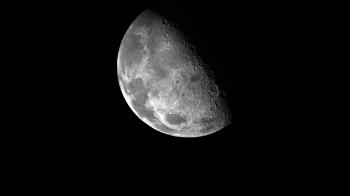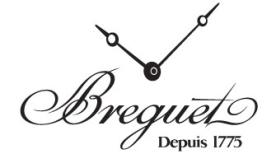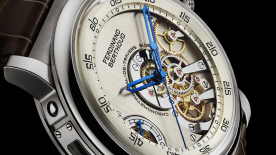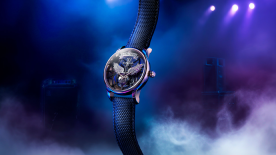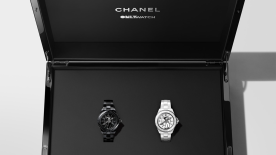The moon changes. Every day, it shows us a slightly different face. From complete invisibility to a perfect, luminous disc, it waxes and wanes, declines and precesses and, sometimes, blushes. Its important role in how human societies operate has made it a rich source of study for astronomers, and a logical choice for a watch complication. The moon’s ever-changing appearance also lends itself to a wide range of aesthetic interpretations. Whether stylised, anthropomorphised or rigorously naturalistic, it becomes part of the identity of each brand, which has its very own particular moon.
They are typically two dimensional: a disc rotates beneath the dial and, according to how it is revealed or concealed, it represents the heavenly body as it appears from Earth. These are the moon phases. The disc may be blue, black, white or gold. Sometimes, as in the case of Vacheron Constantin, it also comes speckled with stars. Piaget prefers it to be smooth, while Jaquet Droz’s versions are pocked with craters, like the real thing. This type of representation leads us to the kind of extreme verisimilitude that we find in Geo. Graham and Patek Philippe watches. Blancpain gives it a mischievous smile, and Breguet gives it a woman’s face. Sometimes the moon is three-dimensional. This tends to be in hefty grand complication watches, such as the Colossal by Hysek. Finally, the moon may also be simply a graphical device taken from an inspirational work. For Van Cleef & Arpels, the moon is not a complication but an episode from Jules Verne’s Five Weeks in a Balloon, poetically illustrated on the dial.
